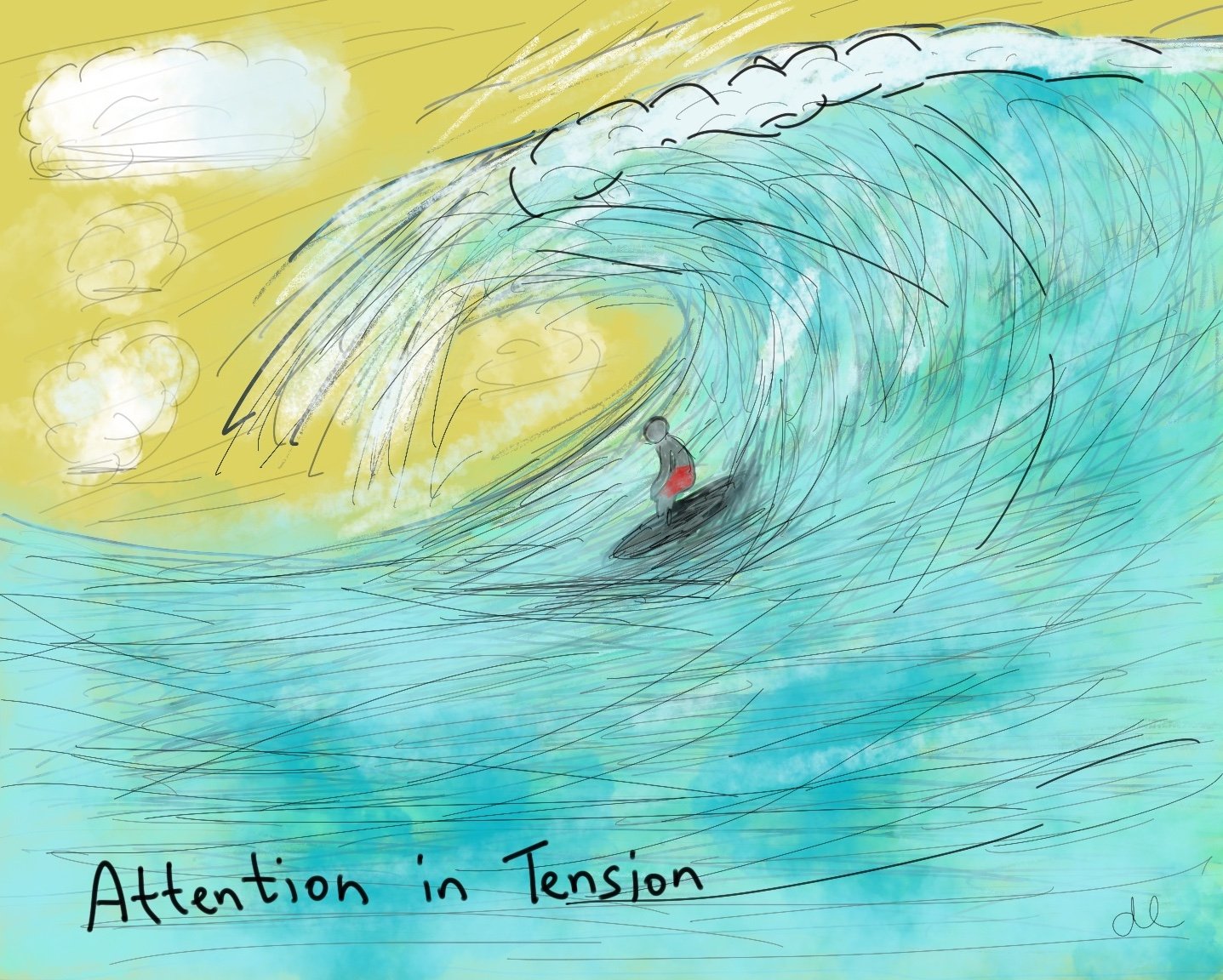Attention in Tension: Strategies for Navigating Conflict and Life
dancing in the sweet spot
Attention and tension come from the same ancient root word *ten: “to stretch”. Adding ‘ad-’ (att-) means “to, toward”. Tension keeps us alive, but many lean away from it, not toward it.
Here are some thoughts and strategies for leaning into tension; into conflict. It can be life-altering.
From our skin to our heart, through muscles and bones.
Gravity, water molecules, oxygen, capillaries, blood.
Systolic and diastolic blood pressures. Atriums and ventricles in our hearts.
‘System 1’ (quick, intuitive) and ‘System 2’ (slow, logical) in our brains.
Sperm and egg.
Tension is everywhere. Friction and gravity keep your vehicle on the road- and us on the planet.
Tension keeps Earth at perfect distance from the Sun, and the moon pushing and pulling tides.
Tension is what causes us to pay attention to good stories: a book, a movie, a news story.
What is a ‘plot’ but a hidden plan to unfold.
To navigate tension is to live.
A highly effective strategy to navigate tension, which sometimes is also conflict, is to surf it more.
I’m no expert surfer, but what I do know is that surfing cannot be approached with hard certainty. It must be approached fluidly, with adaptability, and moving with the water (and other elements).
To surf, we have to move to the sweet spots in the waves. This means paddling out to where the energy moving through the ocean reaches a shallowing shoreline, causing the water to ‘stand up’ and eventually cause waves to break onto shore.
To paddle out, either laying down or standing up holding a paddle. There is tension to navigate. Often one looks for areas with limited tension, but tension nonetheless.
This is where a ‘rip’- sometimes deadly for a shoreline swimmer, becomes a surfer’s good friend. Paradox and tension.
We get to the ‘spot’ where we can “catch” waves. Surfers tense with anticipation. Energy builds tension, as water and friction of the bottom cause waves to form.
The beauty of force, momentum, and then gravity!
Hit the sweet spot right, and the ‘ride’ begins. Then it’s a dance. One that improves with practice and experience.
The wave begins to die. The energy is dissipating. Lay back down, paddle out, and start anew.
Choosing to head out into the ocean and surf, means we’ve made a choice that the wave is not ‘attacking’ us. It does not have an intention to hurt us or kill us. It just is.
And, it’s a critical part of the whole endeavour.
Similarly, we don’t ‘attack’ waves; we try to move with them and enjoy what is offered. When navigating interpersonal tension, similar principles apply.
Waves will come over us- flush, anger, thoughts, assumptions, perceptions.
Waves move through the other person, too.
Surfing requires quick answers to questions waves ask. And, often, it means stay standing when everything in you wants to jump off and ‘turtle’.
But certain waves will pummel you like a washing machine. Maytag’ed.
You just have to stand, lean in, and try to ride it out. It’s exhilarating. And it’s no wonder may dedicate much of their life to the pursuit.
Navigating conflict is not much different. The only thing we can control is our Self. Stand and lean in.
Shift from personal certainty to personal and interpersonal inquiry.
And, learning, practicing, and engaging in tension can also be exhilarating. Life changing.
A key strategy for navigating tension? Questions.
One of the best strategies for navigating tension: before, during and after — is with questions.
Here’s some questions to consider for you and them:
• What is going on here?
• What is your/my understanding?
• Why is this or that important?
• What might an acceptable outcome look like, for you, for me?
• What are some potential obstacles in our paths?
• What would you like to happen here, and into the future?
• Why is that important to you?
Listen to yourself, and to others. See if you can hear what is behind the words.
I’ve not surfed many large waves, but listening for what’s happening is important. I’m deaf in one ear, so this creates challenges (and opportunities).
It becomes a combination of listening and feeling — searching & gaining information.
Like most things, this gets stronger with practice and experience.
Navigating tension and conflict is no different.
Cycles of attack and counter-attack are not productive nor useful. No different than surfing.
Moving with feel and inquiry in a dance of push and pull. Sometimes a burst of energy is needed, and, sometimes intuitive movement adjusting by feel.
Look to cycles of listening and speaking. To cycles of inquiry and advocacy. In dialogue.
And, remember, we form perceptions of others based on their actions and behaviours — but we form perceptions of our self based on thoughts.
This is a place of tension. Moving to inquiry about our self, and others will change the way we navigate tension and pay attention to tension.
_ _ _
Want to stay up to date through my weekly newsletter and other offerings? Subscribe to my publication (hosted on Substack) below.
